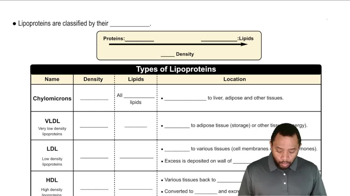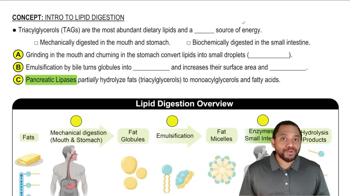Identify each lipoprotein described here as either chylomicron, HDL, LDL, or VLDL.
d. Which lipoprotein contains “bad cholesterol” from a vascular disease risk standpoint?
 Verified step by step guidance
Verified step by step guidance Verified video answer for a similar problem:
Verified video answer for a similar problem:



 1:39m
1:39mMaster Lipoproteins for Transport Concept 1 with a bite sized video explanation from Jules
Start learning